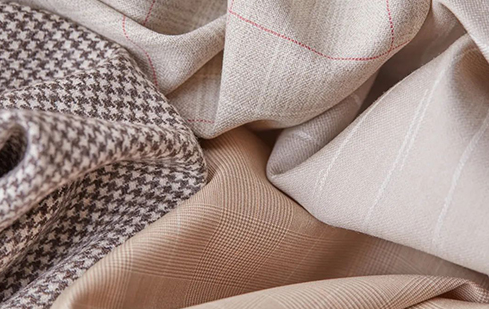
NewsInformation Center
Anti-virus textiles in China draw attention - future development is worth lookin
2022/12/20
Related information shows that the production technology of antibacterial and anti-viral textiles mainly combines antibacterial agent or anti-viral functional finishing agent to textiles by physical adsorption through post-finishing method (dipping, rolling, heating, drying, etc.), the disadvantage is that the antibacterial components and textiles are mainly combined by physical adsorption, etc., the combination is weak, and the antibacterial and anti-viral effective components will be lost after use and washing, resulting in antibacterial and anti-viral textiles. The effect is not lasting, the lost antibacterial and antiviral components are potentially harmful to human body and environment, and the applicable pathogenic bacteria and virus species are limited.
In order to solve this problem, companies that develop and produce antiviral textiles have developed a variety of processes. standard International Group (HK) Limited developed the antiviral nylon 6, which is achieved by adding masterbatch melt blending at the nylon fiber end. The advantage of this technology is that the product functions by adding specific composite nanomaterials at the raw material end to destroy the protein shell of the virus, causing it to lose its living conditions and die quickly, giving the yarn anti-viral and anti-bacterial efficacy, which has been tested by ISO18184:2014 standard and has 99.97% anti-viral activity against influenza A virus H3N2. Because these nanomaterials are firmly bonded to the fiber molecules, they are resistant to washing, function long-lastingly, and ensure safety for the wearer.

The recently hotter anti-viral antibacterial functional textile technology prepared by electron beam grafting technology has the characteristics of broad-spectrum efficient anti-viral antibacterial, safety and long-lasting effect. Its principle is grafted on the fabric similar to the fork-like agent molecules with a positive charge, while the envelope class viruses, bacteria, fungi with a negative charge, positive and negative charges under mutual attraction, the agent molecules will pierce the virus, bacteria, fungi envelope, so as to achieve the purpose of extermination. It is understood that the technology recently passed the China Textile Industry Federation appraisal, the appraisal committee agreed that the overall level of the project reached the international advanced. According to the person in charge, the fabric production line is under construction, and is expected to be able to mass production early next year.
Future development is worth looking forward to
Since the outbreak of the new crown pneumonia, people's health awareness is increasing, making the demand for functional textiles such as antibacterial and antiviral is strong. It is foreseeable that after the epidemic recedes, people's hygiene and health awareness will continue in depth, which will be a major opportunity for the textile industry to upgrade the industry.
The market and consumers are always very concerned about the safety of antibacterial and anti-viral textiles. The testing and evaluation standards for antibacterial and antiviral textiles are becoming more and more perfect, and the supervision and regulation of the market for antibacterial and antiviral textiles by the relevant departments in China is also becoming more and more strict. From the perspective of consumer trends, consumers still prefer non-chemical synthetic antibacterial and antiviral finishing agents of natural origin and plant extracts, hoping that antibacterial and antiviral textiles are green and harmless from the raw material side, which puts forward higher requirements for antibacterial and antiviral finishing agents and textile practitioners.
For the difficulties faced by the anti-virus textile research and development, pay heavy first, said the current enterprise development of product testing is mainly based on ISO 18184:2014 international standards for testing, corresponding to the use of testing the type of virus is the influenza virus, there is no corresponding P3 laboratory can undertake the test effect of anti-new coronavirus. Therefore, the new coronavirus testing standards are still to be improved.
Previous: Washing color fastness tester testing process - essential knowledge
N e x t : Automotive interior fogging tester test experiment



